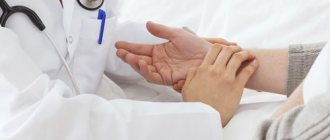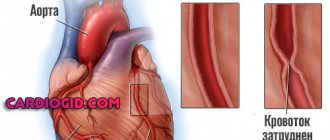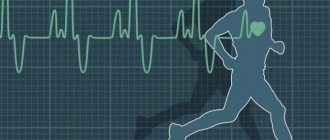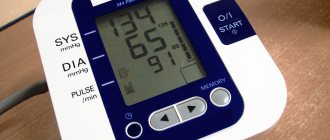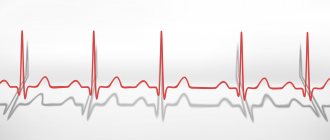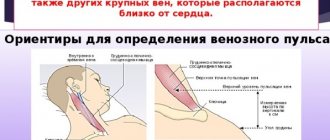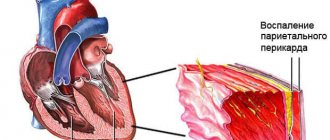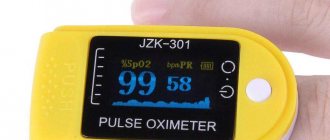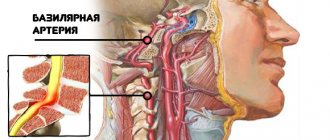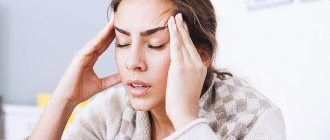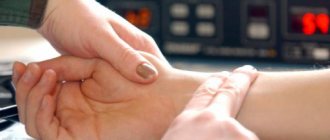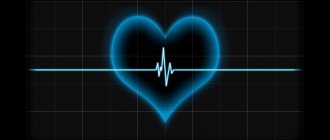What to do during attacks of tachycardia?
Tachycordia is an increase in heart rate.
The heart muscle of a healthy adult at rest contracts 50-100 times per minute. For children, the norm is higher and depends on the age of the child. For a newborn, this is 120-140 contractions per minute. Gradually, by 5-6 years of age, the heart rate decreases to 90. For older people with poor health, 90-100 beats per minute are acceptable. For athletes, 40-60 beats per minute will be the norm. If the heart rate is more than 100 per minute, we can talk about the occurrence of tachycardia.
Its causes and types are varied. An attack of tachycardia can be physiological and pathological.
What happens to the heart after running
Everyone talks about what your heart rate should be while running. It is clear that when running, the heart rate is accelerated. What about after running?
The faster your rhythm returns to your normal heart rate (60-70 beats per minute), the better shape you are. A beginner’s pulse fluctuates for quite a long time after a race, and he also experiences chest colic and shortness of breath. For them, a fast race is stressful (you can see an example in any school gym during physical education classes).
The athlete's rhythm is restored within 60–120 seconds. Even if you start running after a long break, within a couple of weeks you will notice how much faster and easier your heart recovers after running.
Depending on your well-being and fitness, you need to maintain a different running pace. Here are some recommendations if you run for your health or fat loss:
- The running should not be fast. You can run on the verge of walking if it is still difficult for you to maintain a speed of 8–10 km per hour.
- If you experience any discomfort or shortness of breath, take a step. If your heart or its area tingles, also take a step, gradually slowing down. Depending on how you feel further, either continue running or finish it for today (this happens when you start quickly).
- What is the normal heart rate for you when running? Focus on your well-being. If you are comfortable and at the same time you feel a slight strain, then this is a normal state for you. The pulse can be 110, or maybe 130. Faster ri up to 120 beats.
- The running pace should be such that you, again, feel comfortable.
Physiological tachycardia
As the name implies, this is a normal reaction of the body, a natural physiological process, and is not a disease. Rapid heartbeat can be caused by:
- Emotional experiences (grief, fear, joy);
- Any physical activity;
- Various environmental factors (stuffy room, staying at altitude);
- Increased body temperature (heartbeat increases by 10 beats when body temperature rises by 1 degree).
Hot flashes during menopause, banal overeating, and allergies can provoke an attack of tachycardia. The heart rate may increase with frequent consumption of strong coffee or tea, or energy drinks.
A distinctive feature of tachycardia in a healthy person is the absence of pain in the heart. Normally, after 2-5 minutes the pulse recovers on its own; no treatment is required. To determine the maximum allowable heart rate, subtract your age from 220. For example, a person is 60 years old. It is necessary from 220-60 = 160, which means that his pulse during exercise should not be more than 160 beats per minute.
Tachycardia Treatment of tachycardia with folk remedies
loading.
What is tachycardia? Many of us, at least once in our lives, have experienced a condition in which the heart beats very quickly, like a “hare’s.” Such rapid heartbeat, sometimes accompanied by weakness and pain in the heart, is called tachycardia. Tachycardia refers to one of the types of arrhythmias - disturbances in the frequency and sequence of the rhythm of heart contractions.
Arrhythmia can be caused by a variety of reasons. Tachycardia is often caused by stress, coffee, alcohol or excessive exercise. Tachycardia can signal diseases of the cardiovascular system (ischemia, heart defects, hypertension, myocarditis), diseases caused by infections, diseases of the thyroid gland, menopausal changes in the body. Arrhythmia is common in pregnant women.
How can I help you? First of all, you need to reduce physical activity and reduce caffeine consumption. Quit smoking, eliminate alcohol and be less nervous. Adjust your daily diet. Eat less fatty and spicy foods. A vegetarian diet and drinking vegetable and fruit juices are very helpful. More moderate physical activity, for example, walking, doing breathing exercises.
Treatment of tachycardia with traditional medicine.
Tachycardia should be treated based on the reasons that caused it. The following methods will help with first aid for palpitations: you need to take a couple of breaths, close your eyes and press hard on the eyeballs, apply a cold compress to your neck or dip your face in cold water.
If arrhythmia is caused by stress, it is useful to take soothing herbal teas and herbs. Brew tea with mint and lemon balm. It is useful to drink tincture of valerian, motherwort, and hawthorn.
In alternative medicine, there are many methods and recipes for treating tachycardia.
A decoction of chamomile inflorescences, valerian root and mint, 30g each, helps treat tachycardia. Pour about 5-6 g of the mixture into 200 ml of boiling water, leave and drink half or a quarter glass hot several times a day. This collection reduces tachycardia and is sedative.
To get rid of tachycardia using traditional medicine, we also use this mixture of horsetail - 2 parts, hawthorn flowers - 5 parts, knotweed - 3 parts. Pour 5 g (a tablespoon) of this mixture into a glass of hot water, let it brew and strain. Take a third of a glass orally 3-4 times a day for palpitations and insomnia.
This collection also contributes to healing - take peppermint leaves and watch leaves 20 g each, valerian root and hop cones 10 g each. Brew this mixture (a tablespoon) with a glass of boiling water, let stand for 15-20 minutes, strain. Drink 100 ml decoction 2 times a day.
For frequent heartbeats, using fresh honeysuckle berries or tea with berry jam will help. Less commonly used is a tincture of berries. A tincture of the roots and bark of red elderberry is used.
Tachycardia can also be cured with plants that grow in our garden or with products that are very easy to find.
Honey and other bee products help dilate heart vessels and improve blood supply to the heart. For example, mix 1 teaspoon of bee bread with half a glass of honey and consume 1-2 teaspoons 2-3 times a day. Beet juice, mixed half and half with honey, half a glass 3-4 times a day, is recommended as a sedative and for tachycardia caused by high blood pressure.
For tachycardia, folk medicine recommends a decoction of buckwheat inflorescences in combination with marsh cudweed (toad grass). Take the herb of these plants one tablespoon at a time and brew 200 ml of boiling water.
If you follow the recipes, traditional medicine and method of application correctly, you can cure tachycardia.
To find out whether rapid heartbeat is the result of primary tachycardia, you need to consult a cardiologist, do an electrocardiogram of the heart, undergo echo monitoring, ultrasound of the heart and thyroid gland, and take blood tests for hormones. If all indicators give a negative result, then we are talking about secondary tachycardia.
Again, if, with a rapid heartbeat, after taking sedatives and sitting quietly for 15 minutes with your torso elevated and legs down, the pulse does not recover to 80-90 beats per minute, you must call an ambulance, and subsequently undergo a detailed examination of other organs.
In addition, tachycardia occurs with anemia, due to a decrease in hemoglobin in the blood. Reduced hemoglobin reduces blood supply to tissues, and the heart muscle has to contract faster to deliver the required amount of oxygen to the entire body. It is recommended to take iron supplements, ascorbic acid, and a diet rich in vitamins.
Tachycardia often occurs in adolescents during the period of their active growth and development, when cardiac function simply does not keep up with growth. Over time, the process returns to normal.
Tachycardia at elevated temperatures also does not require drug treatment; an increase in heart rate by 10 beats when the temperature rises by one degree is considered normal. When the temperature drops, the pulse normalizes. If the heartbeat is excessively bothersome, you can take a valerian extract tablet or Corvalol.
Secondary tachycardia is treated with medications and sedative herbs, as well as antidepressants. The most effective herbs, such as mint, lemon balm, valerian, rose hips, are taken as tea for a long time (3-5 months).
An increase in heart rate is often observed when taking certain cardiovascular drugs - Trental, Mildronate, Euphilin, Teopeca. It is believed that this is the “first dose effect,” the body’s reaction to a new drug. With long-term use, these side effects usually disappear.
Since paroxysmal tachycardia is a manifestation of organic damage to the heart, it is necessary to treat the diseases that caused the rapid heartbeat, but not to eliminate it.
Regular stress and exhausting physical work, causing secondary tachycardia with a pulse of more than 120 beats per minute, can lead to such a serious myocardial disease as atrial fibrillation. You shouldn’t bring your body to this state; you need to learn to control your emotions, which will significantly prolong your life.
ponakad.wordpress.com
Pathological tachycardia
A pathological attack of tachycardia is usually a consequence of some disease, for example:
- Dystrophic changes in the heart muscle;
- Failure in the endocrine system (hyperthyroidism);
- Disturbance in the process of impulse conduction (between the atrium and the ventricle, in the sinus node);
- Hemodynamic disorders (low blood pressure, dehydration (excessive, frequent vomiting, diarrhea), prolonged or heavy bleeding (trauma, uterine bleeding);
- Myocardial infarction;
- Overdose of cardiac glycosides;
- Vegetative-vascular dystonia, most often in young people);
- Neuroses.
Clinical picture and diagnosis of paroxysmal tachycardia
The high frequency of heart contraction causes the appearance of hemodynamic disorders that accompany this rhythm disturbance. The main reason for changes in hemodynamics is shortening of diastole, accompanied by a decrease in ventricular filling, a decrease in stroke and minute volumes of blood circulation.
It is known that with tachycardias with a frequency above 150 beats per minute, due to short diastole, stroke volume decreases by 70-80%, and minute volume decreases by 30-50% of normal. In such a situation, sufficient blood supply to the brain, heart, kidneys and other vital organs cannot be ensured. With prolonged tachycardia, due to reflex narrowing of peripheral vessels, compensatory centralization of blood flow occurs, aimed at increasing blood pressure.
In case of insufficient compensation, an arrhythmic form of cardiac shock develops. A change in coronary blood flow can provoke an attack of unstable angina up to myocardial infarction.
- Poor blood supply to the brain is sometimes accompanied by dizziness, weakness, and fainting.
- Reduced blood flow in the kidneys can cause anuria and azotemia.
- From the intestines, abdominal pain, flatulence are observed, and sometimes areas of necrosis appear.
Long-term paroxysmal tachycardia can lead to heart failure, usually refractory to drug therapy.
Heart failure develops especially quickly with nodal and ventricular paroxysmal tachycardias, when the physiological asynchrony of the atria and ventricles is disrupted.
Symptoms
Patients with constant rapid heartbeat complain of lack of air, dizziness, nausea, fatigue, and constant weakness. The pulse rate reaches 130 beats per minute.
Paroxysmal tachycardia usually begins suddenly. The pulse rate reaches 200 beats per minute and higher - sometimes it’s even difficult to count. Patients may complain of palpitations (the heart is pounding, jumping out of the chest), dizziness, shortness of breath, darkening of the eyes, a feeling of fear, chest pain, and may faint. The attack may also end suddenly.
Clinical picture and diagnosis of paroxysmal tachycardia
The high frequency of heart contraction causes the appearance of hemodynamic disorders that accompany this rhythm disturbance. The main reason for changes in hemodynamics is shortening of diastole, accompanied by a decrease in ventricular filling, a decrease in stroke and minute volumes of blood circulation.
It is known that with tachycardias with a frequency above 150 beats per minute, due to short diastole, stroke volume decreases by 70-80%, and minute volume decreases by 30-50% of normal. In such a situation, sufficient blood supply to the brain, heart, kidneys and other vital organs cannot be ensured. With prolonged tachycardia, due to reflex narrowing of peripheral vessels, compensatory centralization of blood flow occurs, aimed at increasing blood pressure.
In case of insufficient compensation, an arrhythmic form of cardiac shock develops. A change in coronary blood flow can provoke an attack of unstable angina up to myocardial infarction.
- Poor blood supply to the brain is sometimes accompanied by dizziness, weakness, and fainting.
- Reduced blood flow in the kidneys can cause anuria and azotemia.
- From the intestines, abdominal pain, flatulence are observed, and sometimes areas of necrosis appear.
Diagnostics
Based on the symptoms and collection of anamnesis (patient complaints), one can suspect the cause of tachycardia. To make an accurate diagnosis, the doctor will prescribe special examinations: an electrocardiogram (ECG), ultrasound of the heart (ECHOCARDIOGRAPHY), general blood test, urine test, blood test for hormones.
Currently, it is possible to monitor the work of a patient’s heart in the normal rhythm of life. Using a portable device, which is attached to the belt under clothing, an ECG is continuously recorded throughout the day. This procedure is called 24-hour Holter ECG monitoring. It can be done in the hospital and at home.
First aid
First aid for tachycardia consists of the following:
- Don’t panic, but quickly, if possible, call someone for help;
- Unfasten the collar, ensure sufficient flow of fresh air;
- You can drink Corvalol, Valocordin, motherwort tincture, valerian;
- Wash with ice water, put a cold compress on your forehead;
- Close your eyes, press firmly on your eyeballs for 10 seconds, repeat several times;
- You can take a deep breath, hold your breath and push as if on the toilet. Do all this for 3-5 minutes;
- Try to cough hard.
The doctor will help you in the future
The doctor must decide what to do next. Be sure to consult a doctor. The sooner first aid is provided and the cause of the disease is determined, the more effective the treatment process will be. The main task is to find and eliminate the cause of tachycardia.
Only a doctor can make a correct diagnosis, prescribe medications if necessary, and, if necessary, recommend surgical treatment.
For any form of tachycardia, the treatment complex includes physical therapy (physical therapy), dietary, balanced nutrition, dosed walking, proper sleep, and elimination of factors causing the disease. It is definitely recommended to give up bad habits, not self-medicate and lead a healthy lifestyle.
High pulse: concept, characteristics
High pulse, or tachycardia as it is called, is a heart rate value exceeding 100 beats per minute. In this case, the heart muscle experiences overload, and the functioning of the cardiovascular system begins to malfunction.
To understand the features of the formation of heart rate and the causes of deviations from normal indicators, it is necessary to understand the features of the concept itself. In medicine, the pulse is characterized as a rather “multi-layered” concept, consisting of many characteristics:
- Rhythm of heart beats. Refers to the frequency of heartbeats felt on the artery wall. When a malfunction occurs in the cardiovascular system, this indicator is the first to deviate from the norm.
- The “Filling” parameter shows how much it can be felt on the hand. If this indicator is very weak, we can confidently speak about an insufficient volume of blood released by the heart during one contraction. Also, weak filling may indicate heart failure.
- “Tension” characterizes the force of compression of the artery so that it can be felt. The higher the blood pressure, the stronger the pulse will be felt (sometimes just touching the skin with your fingertips is enough).
- Height. A characteristic that is quite difficult to determine tactilely (most often only specialists can do this). The height of the pulse refers to the degree of oscillation of the arterial wall during measurement.
- Frequency is an indicator that is used to characterize the pulse more often than others. Refers to the number of heart beats per minute. It is usually felt on the wrist or on other large arteries (for example, in the neck).
When talking about a high heart rate, it is the latter indicator that is most often meant.
Strong pulse with low blood pressure
Origin of the disease
Most people who complain about high heart rate and low blood pressure are older people or young age groups. This picture develops during pregnancy. The amount of blood increases during this period, which means the heart has to beat faster. If the tonometer readings are not critical, there is no need to worry. The cause of an overly active heartbeat and low blood pressure is post-traumatic conditions when a lot of blood has been lost and the patient is shocked. Also, shock from poisoning, injury, or cardiology disorders always provokes a high pulse and low blood pressure. It is noted that similar conditions are observed in people with vegetative-vascular dystonia. This phenomenon is also caused by sudden onset of pericarditis, weakening of the heart muscle and embolism.
Return to contents
Symptoms of an attack
Constant pain in the head with low blood pressure is the main symptom.
When a condition occurs with a strong heartbeat and low blood pressure, it becomes difficult to breathe, you feel dizzy, tired, and constantly suffer from headaches. Heaviness appears in the stomach, a spontaneous feeling of fear and doom overtakes. More than other manifestations, a person feels the beating of his heart and this frightens patients and provokes the purchase of a blood pressure monitor.
Return to contents
Causes of high heart rate and potential dangers
Since the pulse characterizes the work of the heart muscle, it is limited to certain values. Exceeding them will indicate disruptions in the cardiovascular system. The average rate is about 60-90 beats per minute (in children - slightly higher).
The method of measuring the pulse and the time at which this process is carried out also play a significant role. For example, in the evening it is always a little higher. This must be taken into account. Also, in a lying position, the heart rate is always lower (than, for example, standing or sitting).
It is advisable not to drink alcohol, not smoke, and also wait a while before taking measurements.
Thus, the most accurate heart rate can be obtained by measuring it in the morning, on an empty stomach and in a sitting position.
If the frequency indicator rises above 90 beats per minute, we can say that it is higher than normal. The list of potential causes of increased heart rate is very long, but most of them are temporary:
- Significant physical activity;
- Psycho-emotional stress (stress, severe anxiety, etc.);
- Improper diet (when the diet is dominated by salty or fatty foods);
- Exposure to neurostimulants (caffeine, cigarettes, alcohol, etc.);
- Increased body temperature;
- Lack of normal sleep (insomnia).
If an excessively rapid heart rate becomes a habitual pattern, we can talk about more serious problems not related to the listed factors. So, a consistently high pulse already indicates problems with the cardiovascular system.
Often, an overactive thyroid gland and metabolic disorders are accompanied by a high heart rate. By the way, alcohol abuse also provokes a constant increase in heart rate.
If the cause of the increase in heart rate is not a temporary factor, it is imperative to consult a specialist.
If an excessively rapid heart rate is observed with low blood pressure, we can talk about the following disorders:
- dehydration;
- blood loss;
- atherosclerosis;
- heat stroke;
- a strong drop in temperature;
- diabetes mellitus;
- cardiac ischemia.
Treatment methods
Drug treatment for high heart rate
Depending on the degree of the disease, the frequency of symptoms and the physiological characteristics of the body, doctors prescribe therapeutic therapy, which includes taking medications.
All medications that help with a pulse of 100 can be classified into three main categories. The table below shows the most effective drugs of each group, as well as their therapeutic effect on the human body. All of these medications can be purchased at a pharmacy without a prescription.
| Group of drugs | Name of drugs | Effect |
| Natural | “Valerian”, “Hawthorn tincture”, “Persen”, “Motherwort”, “Peony tincture” | Dilation of heart vessels, slowing heartbeat, normalizing blood pressure, calming and soporific effect, combating fatigue, irritability, sedative, mild antispasmodic effect |
| Antiarrhythmic blockers | “Atropine”, “Carbacholin”, “Isadrin”, “Asparkam”, “Panangin”, “Aimalin”, “Etatsizin”, “Tatsizin”, “Propafenon”, “Flecainide” | Interfering with the exposure and absorption of adrenaline by the body |
| Synthetic sedatives | "Relanium", "Diazepam", "Phenobarbital" | Reduced symptoms of nervousness or overstimulation |
Treatment of illness using alternative medicine methods
The problem of tachycardia has been known for a long time, so traditional medicine recipes are the first “healers” for this disease. Unlike synthetic medications - the infusions, decoctions and herbal infusions described below - teas are guaranteed to provide benefits without additional harm or side effects.
Hawthorn recipe
Hawthorn is known for its beneficial effects on the heart. It is very simple to prepare a tincture from this plant to reduce the pulse of 100 beats to the normal level (60–80 beats):
The medicine should be taken three times a day, 100 ml before meals. You can add 2 tsp to the main herbal ingredient. horsetail and 3 tsp. knotweed. The recipe for making this tincture is the same as the first one.
Medicines based on honey
This bee product is famous for its high content of proteins and vitamins necessary for normalizing the functioning of the heart muscle. Recipe for preparing a medicine based on honey:
You need to take the drug 2 tbsp. l. 1 time per day until the medicine runs out.
“Soothing herbal infusions and teas made from them”
To strengthen the immune and nervous system, it is recommended to drink herbal teas and decoctions.
| Recipe 1 | Recipe 2 |
| Mix chamomile flowers, valerian, caraway fruits, fennel in equal proportions. Pour 1 tbsp. mixture of dried flowers 300 ml boiling water. Leave for an hour. Strain through cheesecloth. Drink the entire decoction (300 ml) in one gulp daily for 14–21 days. | Grind peppermint, watch, medicinal angelica. Mix in equal proportions. 1 tbsp. Boil the herb mixture in 250 ml of boiling water for 3 minutes. Infuse the decoction for at least 3 hours. Drink 100 ml herbal tea 2 times a day for 14 days. |
What to do if your heart rate is high
When your heart rate increases, it is important to carefully analyze the situation. Firstly, is this manifestation caused by any of the above temporary factors. If this is not the case, it is worth measuring the pressure. High blood pressure is often accompanied by an increased heart rate. If the pressure is normal and all factors associated with the failure are excluded, it is worth considering more serious causes.
Procedure for elevated heart rate:
First, take a deep breath and try to calm down. Sit down, drink a glass of water. After approximately 15 minutes, measure again. If he returns to normal, then there is nothing to worry about.
If the high pulse persists, but you feel quite normal, you can take soothing drops (for example, motherwort, Corvalol, etc.) and lie down. Open a window and focus on deep, even breathing. Just in case, measure your blood pressure (if you have a tonometer): perhaps the whole point is to increase it.
If, in addition to a high pulse, there are symptoms such as fever, pain in the abdominal cavity or heart area, dizziness, etc., you must urgently call an ambulance. Wait for her arrival lying on the bed, do not take any medications yourself.
Try a few exercises that should help lower your heart rate:
- inhale deeply, exhale with tension (cough when exiting);
- Gently knead the sides of the neck, where the large arteries are located;
- lightly press on the hole located on the inside of the left arm in the area of the hand and hold it pressed for about a minute;
- apply light pressure to your eyeballs and hold your fingers on them for about 30 seconds.
What to do if your heart rate increases from 180 to 200 beats per minute
An increase in heart rate to 180 - 200 per minute is always a serious threat to health.
Even with a single registration of such a heartbeat value, you must consult a doctor.
Reasons for the increase
An increase in heart rate (HR) and pulse up to 180 - 200 per minute, if we consider it as an electrical process in the heart, can have different origins. The diagnosis and treatment methods depend on the nature of the rapid pulse.
Therefore, some patients with such palpitations will be suitable for certain techniques and medications, while others will be suitable for completely different ones. We recommend that if your heart rate increases to such figures, do not hesitate and call an ambulance, at least to register an ECG during an attack.
This is very important for further treatment.
So, a pulse of 180 per minute can occur as a result of the following processes occurring in the heart:
- Severe sinus tachycardia.
- Supraventricular or supraventricular tachycardia.
- Atrial flutter.
- Paroxysmal ventricular tachycardia.
Severe sinus tachycardia
Thus, if a pulse of 180–200 occurs in a young man during intense exercise, it must be stopped and wait for the heart rate to normalize. In all other cases, urgent medical attention is required.
It is almost impossible to independently help a patient with the listed arrhythmias (with the exception of vagal tests, which will be discussed below).
Such indicators can occasionally develop in young people 20–30 years old during intense exercise, for example, running. This cannot be allowed.
During physical activity and running, it is necessary to keep your heart rate much lower so as not to deplete the heart muscle. After stopping the load, the pulse in such people quickly slows down to normal values (recovery times vary from person to person, usually ranging from 3 to 10 minutes).
Supraventricular tachycardia
Supraventricular or supraventricular tachycardia - this condition is already a pathology.
With it, signals for heart contractions are formed in one of its upper chambers (atria) and, due to anomalies in the structure of the conduction pathways, cause an attack of rapid heartbeat with a frequency of more than 140 per minute.
Such a paroxysm can even last for several hours or days and requires immediate medical attention. In young people and children, a pulse of 180 per minute is often a manifestation of tachycardia in Wolff-Parkinson-White syndrome.
Atrial flutter
Atrial flutter - this arrhythmia is characterized by abnormal frequent contractions of the atrial myocardium, which are carried out to the ventricles regularly (a coordinated form of flutter).
With a pulse of 180–200, the ratio of excitations of the atria and ventricles is 2:1, that is, the atria contract weakly, with a frequency of about 360–400 per minute.
This condition is dangerous due to the development of thrombosis of blood vessels in the brain or heart, that is, the development of myocardial infarction, stroke, and requires immediate medical attention.
Paroxysmal ventricular tachycardia
Paroxysmal ventricular tachycardia is a life-threatening arrhythmia in which the ventricles contract without communication with the atria at a frequency of up to 220 per minute. At the same time, they practically do not relax, so they cannot fill with blood from the atria.
Therefore, during such an arrhythmia, very little blood enters the vascular system.
The patient experiences oxygen starvation of the tissues, and if the attack lasts more than 30 seconds, loss of consciousness is possible, and later - transition to fibrillation, ventricular flutter and cardiac arrest.
Heart diseases
In healthy people, the listed heart rhythm disturbances, that is, idiopathic forms of arrhythmias, rarely occur. Moreover, they are associated with congenital genetic changes in the conduction system of the heart.
Much more often the causes of heart attacks of 180 - 200 per minute are heart diseases:
- coronary heart disease, including previous myocardial infarction;
- cardiomyopathy (hypertrophic, restrictive, dilated);
- myocarditis;
- congenital and acquired heart defects;
- Wolff-Parkinson-White syndrome;
- CLC syndrome;
- chronic heart failure.
Noncardiac causes of rapid heart rate, such as fever, anemia, lung or thyroid disease, do not cause the heart rate to increase to such high levels (with the exception of supraventricular arrhythmias in thyrotoxicosis).
It is not worth trying to find out the cause of such rhythm disturbances on your own without additional examination.
Symptoms
The development of a rapid pulse up to 180 - 200 per minute is usually well felt by a person. The paroxysm begins suddenly. The following symptoms arise and intensify:
- dizziness, “veil” before the eyes;
- shortness of breath, lack of air;
- interruptions in the functioning of the heart, any tremors or other unpleasant sensations;
- pressing pain, heaviness behind the sternum;
- severe weakness, nausea, decreased blood pressure.
If the arrhythmia continues, loss of consciousness, a sharp decrease in blood pressure, thread-like pulse, coldness of the extremities are possible, that is, arrhythmogenic shock develops. Such cases require treatment of the patient in the intensive care unit.
Diagnostics
When attacks of increased heart rate up to 180–200 per minute occur, an in-depth examination of the cardiovascular system is necessary. Typically it includes the following methods:
- ECG;
- X-ray of the lungs;
- echocardiography;
- 24-hour ECG monitoring or “cardiac event” monitor;
- in some cases, transesophageal electrophysiological study.
To recognize the causes of arrhythmia and its proper treatment, an examination by a qualified cardiologist and a functional diagnostics doctor is necessary.
Treatment
How to help yourself when developing a heart rate of 180 – 200 per minute:
- stop any exertion, lie down;
- loosen tight clothing and provide fresh air;
- Call an ambulance.
You can try to do vagal tests, but they will not always help stop attacks:
- deep breath with straining;
- washing in a basin of cold water while holding your breath.
To make you feel better before the doctors arrive, you can offer the patient 20–30 drops of Corvalol or Valocordin; It is not recommended to use anaprilin on your own due to the risk of lowering blood pressure.
Possible treatment options for such arrhythmias:
- taking medications that prevent the development of an attack (they are selected by a cardiologist, and the effectiveness is assessed by repeated daily ECG monitoring);
- surgical operations (for example, RFA for WPW syndrome, or a combination of RFA with pacemaker implantation for severe forms of atrial flutter).
Take the TEST: Do you have tachycardia?
Source: https://PulsNorma.ru/vjsokij-puls/180-200.html
Prevention of the problem
In order to avoid a high heart rate, you need to follow a few simple rules.
- Make sure that your work schedule includes regular walks in the fresh air.
- Try to drink at least 1.5 liters of water per day.
- Remember to exercise moderately (but do not overload your body).
- Periodically give yourself at least half an hour of relaxation. Meditate, master breathing practices.
- Listen to your favorite music more often, devote at least a couple of hours on your day off to creativity or your favorite hobby.
Try to take care of your health (both physical and mental), avoid stressful situations whenever possible. Love yourself and be healthy!
Why running at a high heart rate is dangerous for your health
Amateur runners unknowingly do not pay attention to their heart rate, although running at the correct heart rate is very important. If the pulse is too high, then the body does not train, but becomes exhausted, which threatens the athlete’s health. “RG” talked to a running coach to find out why you need to monitor your heart rate while running, what dangers a high heart rate poses, and how to correctly determine your heart rate zone. The questions were answered by Vasily Permitin, a member of the Russian mountain running team and the sports coordinator of the I Love Running school of proper running.
Why is monitoring your heart rate important for a runner?
Vasily Permitin:
Pulse is the most objective indicator for determining a runner's condition. Each degree of intensity has its own pulse zone. Each workout contains peak and recovery loads corresponding to specific heart rate zones. You need to pay attention to this, otherwise you risk getting into the wrong pulse zone and overloading the body.
What pulse zones exist?
Vasily Permitin:
Any workout involves a load, which, in turn, is divided into five degrees of intensity: recovery, aerobic, threshold, anaerobic and maximum load zone.
How to determine your pulse zone?
Vasily Permitin:
To determine your heart rate zone, you need to calculate your maximum heart rate, because each heart rate zone corresponds to a percentage of it. The recovery zone is 55-75% of maximum heart rate, aerobic - 75-85%, threshold - 85-90%, anaerobic 90-95%, maximum load zone - 95-100%.
Most amateurs devote their training to aerobic cross-country, that is, running in the first and second heart rate zones. A simple indicator that you are in the correct heart rate zone is that you can talk freely while running.
How to calculate maximum heart rate?
Vasily Permitin:
Ideally, this is done in a special functional diagnostics laboratory during a functional test to determine MOC (maximum oxygen consumption) and TANO (anaerobic metabolic threshold), here you will be calculated both pulse zones (they can be individual and differ from the percentage classification) and maximum pulse .
The next option is a running watch from Garmin or, for example, Polar - these watches (of course not so accurately) can calculate both MOC and even PANO (when analyzed in special programs) and, of course, they will accurately record your heart rate and automatically calculate your zones.
And finally, if there is nothing, then you can turn to the formulas: “220 - age” or the refined “205.8 - (0.685 * age)”, but their accuracy will leave much to be desired.
How to calculate the heart rate zone when the maximum heart rate is known?
Vasily Permitin:
For example, your maximum heart rate is 200. Then the formulas are:
- Zone 1 – 55-75% of maximum heart rate (200/100*55 (or 75) = from 110 to 150 beats per minute – recovery zone
- Zone 2 – 75-85% of maximum heart rate (200/100*75 (or 85) = from 150 to 170 beats per minute – aerobic zone
- Zone 3 – 85-90% of maximum heart rate (200/100*85 (or 90) = from 170 to 180 beats per minute – anaerobic metabolism threshold zone (when the body sharply begins to accumulate lactic acid, a person can stay in it for 30 minutes up to 1 hour)
- Zone 4 – 90-95% of maximum heart rate (200/100*90 (or 95) = from 180 to 190 beats per minute – anaerobic zone
- Zone 5 – 95-100% of maximum heart rate (200/100*95 (or 100) = from 190 to 200 beats per minute – glycolytic maximum zone
Why is it important to train in the first and second pulse zones? What are the harms of frequent use of other pulse zones?
Vasily Permitin:
Everything is being built step by step and gradually. Just as a house begins with a foundation, a runner's aerobic profile must be based on a strong aerobic base, meaning he must have a strong heart that can pump a sufficiently large amount of oxygenated blood in one beat. This is achieved by training in the first and second zones; also in these intensity zones, fats are burned best, the capillary network in the muscles develops and, as a result, the efficiency of oxygen consumption.
Processes in the body at different heart rates
Easy running and 120–130 beats per minute
A rate of 120 beats per minute is comfortable for the heart. Nature has designed it so that at this frequency the cells have enough blood and oxygen to carry out aerobic activity.
This means that such running will not change your anaerobic threshold in any way, will not cause the formation of lactic acid and will not significantly affect the condition of your muscles.
The last statement is true, since such a heart rhythm can be maintained by mixing walking and running. That is, you will not be able to exhaust the body as much as, for example, with a heart rate of 140–150 beats per minute.
What are the benefits of a heart rate of 120 beats?
- The heart muscle is trained. Blood supply to all organs and tissues improves. This is extremely important for the central nervous system, since its functioning directly depends on the blood supply. It turns out to prevent stroke and other unpleasant diseases. It has been experimentally proven that attention acuity and memory are better in those who train their hearts in the fresh air to 120–125 beats per minute.
- Lactic acid is removed from the body (if you, in addition to running, do heavy training).
- At the number 120–130 is the so-called fat burning threshold. That is, this is the heart rate level at which the body begins to use fats instead of carbohydrates to extract energy. This is why running training with a constant rhythm of 120–130 beats is useful. Please note that you need to run for a long time - from 20 minutes to an hour. Then it will make sense.
Thus, a running heart rate of 120 beats per minute is healthy.
It is suitable for those people who run for pleasure, without setting goals to improve their running performance.
In general, running training requires a special program, which a competent coach can create. And this program is selected individually. You won’t find your exact option on the Internet – it simply doesn’t exist, it needs to be compiled specifically for your specific needs.
Also, keep in mind that you won’t be able to hold 120 hits all the time. There will be slides - on the rise, the heart will speed up, the body will feel heavy. To make it easier to keep your heart rate at the same level, you can combine running with walking on more difficult sections.
